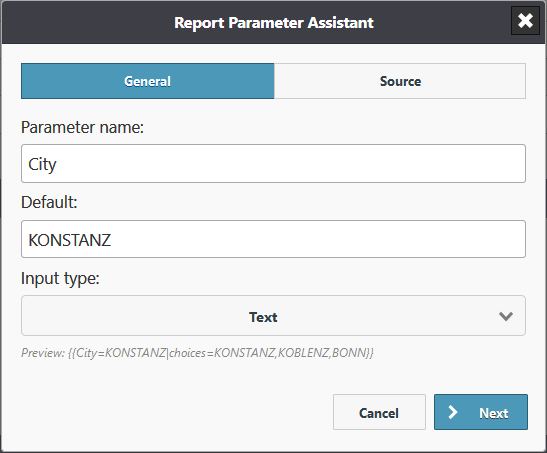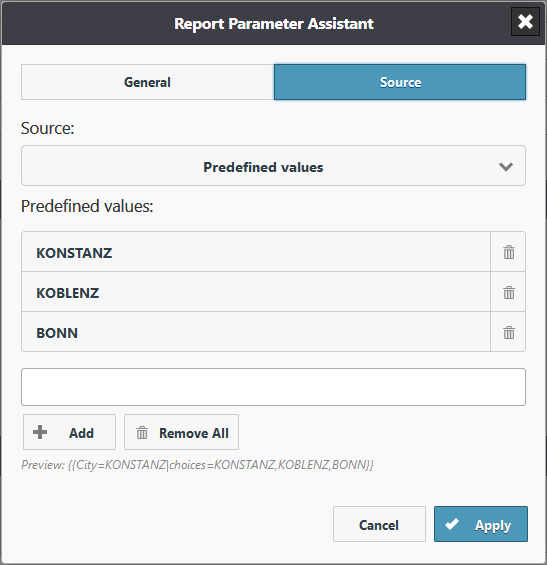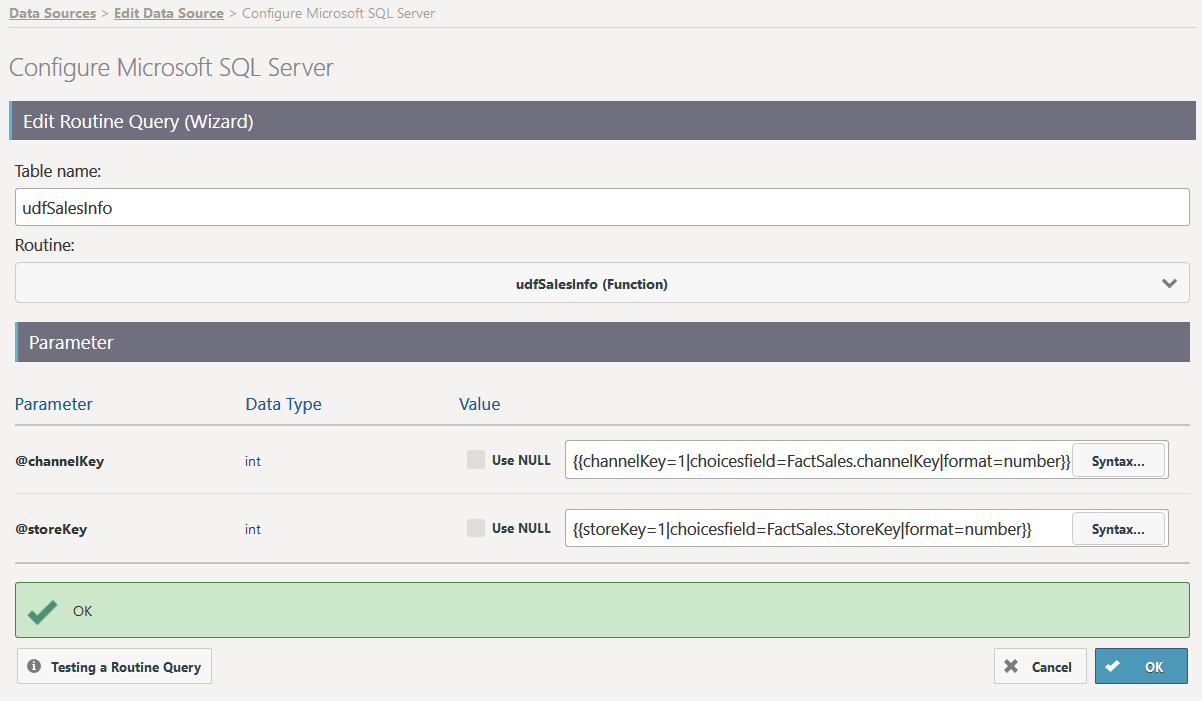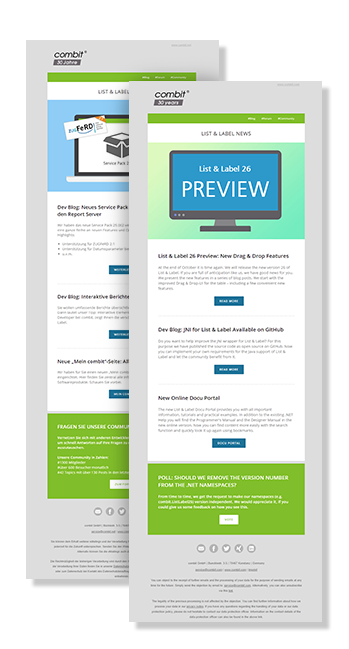Assistant for Data Source Parameters
Previously, the structure (syntax) of report parameters defined via the data source had to be taken from the manual and typed in. We have already reported on the Data Source Parameters feature in last year’s blogpost.
It is now possible to define data source parameters easily and conveniently using the new wizard.
So instead of the cumbersome tinkering of “{{City=KONSTANZ|Choices=KONSTANZ,KOBLENZ,BONN}}” we now work with the assistant:

SQL Routines in Data Sources
In some SQL-based data sources, routines such as Stored Procedures and Table-Valued Functions can now be easily added along with the defined parameters (including support for data source parameters). Stored procedures provide good performance for complex queries. Starting with version 25, they can be used analogously to the individual queries in the Report Server.
Currently supported are data sources of type Oracle, Microsoft SQL Server, MySQL (MariaDB) and PostgreSQL which can return a table. Please refer to the documentation for exact requirements and restrictions. As you can see, parameters of the routines themselves can be defined as data source parameters.
Composite Keys for Relations
Existing relations in a data source (defined via Constraints) are automatically recognized in the Report Server and are therefore available in the Designer. This revised dialog is now available for creating additional relations within a data source.
It is now possible to create relations not only with a key, but also with a compound key. The assignment (linking) of data records takes place when all fields match.
Possible use case:
Composite Primary Keys or Compound Primary Keys are often used for N:M assignment tables.
New Export Formats
The Report Server previously had a very good selection of 18 export formats. Starting with version 25, two more formats have been added:
- The List & Label preview format, popular with developers, can now also be generated directly by the Report Server.
- The JSON format is very often used for data exchange between applications (especially in the web area).
Improvements of the REST API
It is now possible to start planned reports using the REST API with report parameters and overwrite the default values.
“/api/v1/tasks/{TaskID}/run” now accepts report parameters via URL, just like when exporting.
Example:
POST http://localhost/rs25/api/v1/tasks/1249E640-BB94-4449-88B4-406236612DC9/run?$Year=2017
The list of new features is of course not yet complete. In another blog post we will inform you soon about further features and enhancements.
For over 20 years Alexander Horak is engaged in software development and has already worked at combit during his computer science studies. Nowadays, he is Head of Development of the combit Report Server, an ASP.NET MVC based Enterprise Reporting solution. In his spare time he loves soccer and is an active supporter of FC Bayern Munich.







